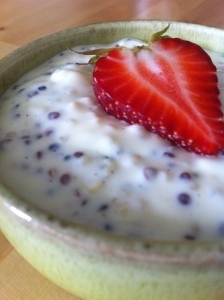Picky Eater Success Strategy: Deconstructed Dishes
/This is a favourite picky eater success strategy. It really can help you make one meal for the whole family. I have no idea why many kids don’t like their foods to touch. Another mystery that stumps me is why when sauces touch foods it’s considered unacceptable, but dipping is fun and yummy.
These are just 2 of the common great unsolved mysteries of young children’ eating habits. You’ll drive yourself crazy if you try to figure out why it is this way. It’s equally futile to try to rationalize with your child about how peas that have touched chicken are no different than peas that haven’t touched chicken.
So don’t waste your time (and brain cells). Leave it be and trust that (eventually) they’ll grow out of it.
In the meantime you aren’t relegated to eating sauce-free meals. Or, making your child a completely different dish every night. Instead, serve your child deconstructed dishes.
Picky Eater Success Strategy: Deconstructed Dishes
What I mean by “deconstructed” is to serve your child all the same components of your meal – but in a manner so that they aren’t touching. Take a beef and broccoli stir-fry for example. Cook a small amount of the meat, broccoli, and other veggies in the pan before you add the sauce. Remove them and set aside. Continue cooking the stir-fry with the rest of the ingredients and sauce. On your child’s plate place each of the items so that they are not touching each other, i.e. some beef, broccoli, other veggies, plain rice, and a small amount of sauce (perhaps in a dipping container like a small ramekin or saucer). And, place a very small amount of the stir-fry with all the foods touching with the sauce on it (like you are eating it).
“Deconstructed” meals are a fantastic compromise because they:
Allow you to eat a wide variety of dishes.
Allow your child to join you in sharing dishes.
Make your child feel confident with food because he has control over what ingredients he does and doesn’t eat.
Book an information call today to find out how I can help your child.



















